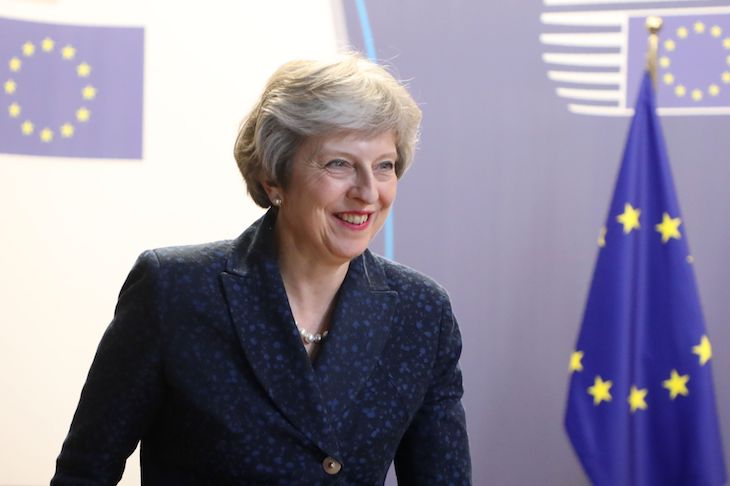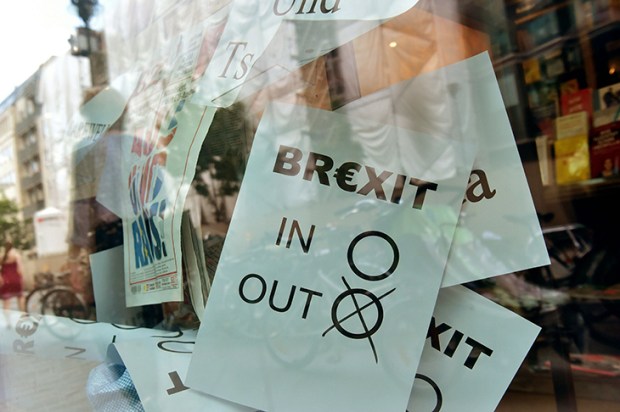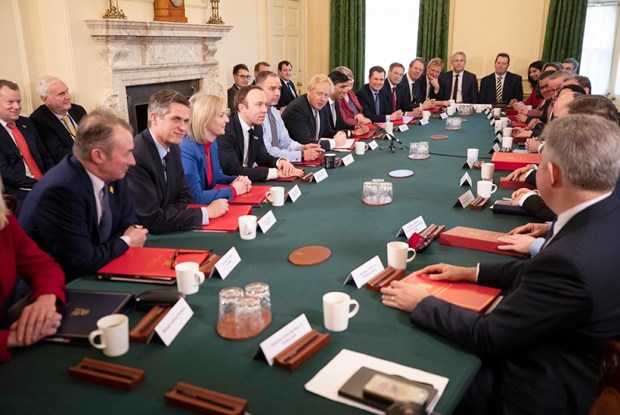It isn’t just Brexit that worries the government, as the cabinet meeting this week demonstrated. Much of it was taken up with a discussion of the upcoming Nato summit and Donald Trump’s visit. Ministers were told that Britain would be encouraging its allies to increase defence spending, with the aim of assuaging Donald Trump and strengthening the alliance. Michael Gove then asked what Britain was getting out of joining this lobbying effort: Boris Johnson responded that the goal was to ‘get through the week’. Gove dismissed that as a ‘lie back and think of England’ approach. Theresa May then took exception to the use of this phrase.
It doesn’t take much to cause an upset in cabinet nowadays. Secretaries of State have been arguing in the open with little regard to the government’s current stance. Ministers are openly speculating about whether any of their colleagues will resign over Brexit.
Mrs May’s approach of sidelining the Brexit inner cabinet, evenly divided between the two Tory positions, in the run-up to Chequers and, instead, meeting senior ministers individually hasn’t helped matters. The tone of these conversations riled leavers. One complains that ‘they are, basically, what can we give away?’
Mrs May is now preparing to publish a white paper next week outlining her negotiating position. She is seeking what one insider describes as an ‘evolved Mansion House’, a reference to her last big Brexit speech. This will see the UK, essentially, committing to following EU regulations on goods to ease trade. But I understand that this plan would see parliament in future altering the law where necessary to maintain alignment with EU rules.
So Brexiteers will be in a position to argue that parliament is simply choosing to align with EU rules and could decide — if it deemed it worth the hit in terms of market access — not to implement a particular regulation. We will have taken back control and just decided not to exercise it.
This is meant to address Boris Johnson’s fear that vested interests in Europe will take advantage of UK rule-taking to harm British industry. The Foreign Secretary is more anxious about this than any other aspect of Brexit and frets to friends that if James Dyson invented a driverless car, the German car industry would lobby for the EU to change its rules to crush his innovation.
The second big element of May’s prospectus is her customs plan. It is neither the new customs partnership that couldn’t win over the Brexit inner cabinet nor the Brexiteers’ favoured maximum facilitation model. Instead, it is something called a facilitated customs arrangement.
It’s odd to think that so much rests on such jargon. The latest phrase is one that almost no one in government was familiar with just a few days ago. The details are fiendishly technical, but important. It would see all finished, imported goods charged the UK tariff, set independently of EU rates. So Britain can strike trade deals with other countries that would cut the tariffs on their manufactured goods in exchange for allowing UK services into their markets. Britain would still promise not to deviate from EU standards, so we could not change regulations as part of any trade deal. But such deals could, still, be made.
To minimise friction at the ports and to help with the Irish border issue, goods would be tracked once they entered the UK. They would be charged the EU tariff rate if they were sent on to the Continent. I am told that only 4 per cent of trade would have to pay this premium. It remains to be seen what kind of oversight the EU would demand over this process and how invasive it would be.
This new proposal is far from the kind of clean Brexit that many leavers dreamed of two years ago. But they might just be able to live with it given the paucity of other options; the government’s no-deal preparations are nowhere near as advanced as they should be and parliament may well try to suspend Brexit if there is no deal. One well-placed source predicts: ‘They’ll whine, they’ll moan. But they won’t resign.’
And how might the EU respond? It is waiting to see the actual white paper, out next week, before engaging with the UK’s proposals. But I understand that the EU, which dislikes its agreement with Switzerland, will push hard for an automatic updating of UK regulations to keep them in line with EU ones. If the EU gets its way on this, then Britain really would be a rule-taker not a rule-maker. This would make the deal considerably less appealing to Brexiteers as it would make it harder to unpick in future.
An even bigger question is what the EU will demand on migration in return for offering the UK easy access to its internal market. I understand that the white paper will be deliberately vague on what the UK is prepared to offer on this. But the EU is bound to push for something approaching free movement.
From a political point of view, you could sum up what No. 10 is trying to achieve as follows: minimise the economic disruption of leaving the EU to maximise Theresa May’s chances of staying as Prime Minister and the Tories of winning the next election. At the same time, they must do a deal that the public recognises as Brexit and which doesn’t split the Tory party.
On the latter point, what happens on free movement is crucial. If May can say that she really has ended free movement and that the UK won’t be paying big sums into the EU budget any more, the public will see the deal as Brexit.
But the EU will be reluctant to move on the totemic issue of free movement. As one of those who has been scuttling between No. 10 and key Brexiteers tells me, the problem is that ‘both EU theologians and the British public want their view sanctified’. Religious differences are, alas, always the hardest to settle.
Got something to add? Join the discussion and comment below.
Get 10 issues for just $10
Subscribe to The Spectator Australia today for the next 10 magazine issues, plus full online access, for just $10.
You might disagree with half of it, but you’ll enjoy reading all of it. Try your first month for free, then just $2 a week for the remainder of your first year.















Comments
Don't miss out
Join the conversation with other Spectator Australia readers. Subscribe to leave a comment.
SUBSCRIBEAlready a subscriber? Log in